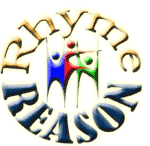Bob Leslie is an Independent Scottish Songwriter, Singer, and Recording Artist
Death by broken heart …
Barbara Allen is a traditional Scottish ballad. It travelled to America both orally and in print, where it became a popular folk song.
The ballad is thought to be the most widely distributed folk song in the English language with many versions found in the British Isles, and hundreds of variants in North America.
Although there are many versions, they generally follow a similar plot.
A servant asks Barbara Allen to come to his master, who is pining away for her.
She visits his bedside where he begs for her love, but she rejects him, often claiming that he had mocked her while drinking with his friends.
He dies soon after, and Barbara Allen hears the funeral bells ring.
Overcome with remorse, she also dies, and the pair are buried in the same churchyard.
Two flowers grow from their graves – normally, a briar and a rose. The flowers grow into a lovers’ knot, uniting them in death as they were not in life.
……………………………………………………………..
The song is an old one, probably pre-dating the first mention of it in Samuel Pepys’ diary  for January 2, 1666, where he refers to a New Year’s party he’d been at where he’d heard a lady singing.
for January 2, 1666, where he refers to a New Year’s party he’d been at where he’d heard a lady singing.
She was referred to by him as “My dear Mrs Knipp” – perhaps suggesting something more than friendship (Pepys was known for his amorous tendencies!).
The lady in question was a well-known actress, singer, and dancer at a time when the theatricals were regarded as a bit fast and loose in their sexual morals.
At the party, Mrs Knipp performed “her little Scotch song of Barbary Allen.”
……………………………………………………………..

A broadside of the song was published in London, in 1690, under the less than catchy title of Barbara Allen’s cruelty: or, the young-man’s tragedy. With Barbara Allen’s lamentation for her unkindness to her lover, and her self.
The earliest printed versions name the young man as Sir John Graeme. Most later variants – especially in North America – tend to retain the initials JG, but the rest of the name tends to get mangled, e.g. Jemmy Grove, Jimmy Green etc.
The song follows the formula of stage tragedy in that it starts at a high point – usually a festival of some kind (Lammas, Martinmas or May), and goes downhill, with respect to the fortunes of its participants, thereafter.
Although the theme is pretty constant, the song title changes from locality to locality, being, variously, Barbara Allen’s Cruelty, Hard Hearted Barbary Ellen, Sir John Graham, Bonny Barbara Allan, Barbry Allen et al.
……………………………………………………………..
It experienced a revival during the 50s folk boom in the USA, and has since been recorded by a host of performers including Pete Seeger, The Everly Brothers, Joan Baez, Simon & Garfunkel, Tom Rush, Ewan McColl, Shirley Collins, Martin Carthy, June Tabor, and Martin Simpson.

As well as being popular in its own right, it has also inspired other songs – Bob Dylan says that without Barbara Allen, “there’d be no Girl From the North Country.”
Although the song is of Scottish origin, it was the American folk boom that sparked its revival over here, and it was American versions I heard in the Scottish folk-clubs in the 60s. So I’m going to go with a version from the USA.
Don Edwards is a fine exponent of the Western song,  he also does more than a few traditional ballads. I love his voice, and this live take on Barbara Allen is probably closest to what I used to hear way back when.
he also does more than a few traditional ballads. I love his voice, and this live take on Barbara Allen is probably closest to what I used to hear way back when.
This is a live take, but the song is available on Don’s 2006 album Last of the Troubadours.
……………………………………………………………..
Lend an ear and an eye …
Barbara Allen
Traditional, arr © Don Edwards 2006

……………………………………………………………..
Stresses and strains …
The stress pattern is regular:
- Ll 1 & 3 have 4 stresses
- Ll 2 & 4 have 3 stresses
The metre however is very variable.
Some verses follow a mainly iambic (dah-DUM) structure, others reverse this to a trochaic (DUM-dah) form.
But even this varies, with, for example, an anapest (dah-dah-DUM) in V1L3 at
“from the West-“,
and a 4th paeon (dah-dah-dah-DUM) in V10L3 at
“in a true lov-“.
……………………………………………………………..
Rhyme with reason …
The end-rhyme structure is a very simple A B C B all the way through.
- “May” bloomin'”
“states” “Allen” - “up” “nigh him”
“there” “dyin'”
etc.
……………………………………………………………..
A key you can count on …

The song is in what is almost the simplest manifestation of D major having only two chords:
- D major & its dominant chord (aka the no. V chord), A major
and the tune spans an octave from low D to high D, making great use of arpeggio-type runs.
This gives the song a fairly varied, lilting melody while keeping it pretty easy to sing.
……………………………………………………………..
The verdict? …
The only irregularity in the song’s structure occurs in the variations in its metre.
“The trouble with folk songs,” as satirist Tom Lehrer once opined, “is that they’re written by the folk!”
“The folk”, as everyone knows, tend not to obey “the rules” in their entirety – whether those be of grammar or the law of the land. So, we can pretty much expect some veering away from strict regularity in folk-songs!
Despite that, it’s a catchy tune, and a good story. Plus, as I indicated earlier, it’s been recorded by everyone and their granny. I’m not going to argue. It’s a hit!
……………………………………………………………..

Next time, we’ll look at a song from a writer
who’s a wee bit younger than 350 years old!
…………………………………………………………….
Click here to return to Home page
Bob Leslie – Scottish – Traditional – Songwriter




There is no evidence at all that the song Barbara Allen has a Scottish origin.
First noted by Samuel Pepys in January 1666 at a high class London party he describes it as a ‘little Scotch song’ but at the time there was a fad for songs ‘in the Scottish style’ – they were known as ‘Scotch songs / tunes’ and written by English ballad writers. Also, the performer was a professional actress, dancer, and singer with the theatre group ‘The King’s Company’ and the song is described by Pepys as ‘her’ song all of which points to it being written for the stage (and perhaps for her?).
The earliest known printed version from 1675 and in the Roxburghe Collection does not name the young man at all he is simply ‘this young man’.
Also, the first line begins ‘In Scarlet Town where I was bound’. Scarlet town being a punning name for the English town of Reading (Red-ing).
LikeLike
I agree that there is nothing absolutely certain regarding a Scottish origin, but the earliest printings – as opposed to the earliest reference – mention Sir John Graeme (a Scottish Borders name) and Martinmas, and the Martinmas versions are most commonly found in Scotland. Sir John Graeme is sometimes also named Sir John “The” Graeme – a common Scottish corruption of the Norman “De” and also commonly attached to the name of clan and noble family chiefs in the Borders and further north, e.g. The MacDonald, The Douglas.
18th century poet Oliver Goldsmith refers to the song as “Johnny Armstrong’s Last Goodnight, or The Cruelty of Barbara Allen” – Armstrong being another Scottish Borders name, and more than one Borders Lord has been named John.
The late 18th century collection “A Scots Musical Miscellany” makes the claim that the story upon which the song is based originated in Dumfriesshire.
Claiming “Scotch song” as identical to “in the Scottish style” is speculative at best. Certainly, the “Scarlet Town” reference seems to refer to Reading, and the version Pepys heard (according to, again, a purely speculative interpretation by a pair of folklorists) may have been a satire on Charles II’s affair with Barbara Villiers.
But nothing identifies either the “Scarlet Town” lyric or the version Pepys refers to as the original. For all we know, the lyric may have been adapted for a satirical purpose from an earlier version. The fact that it, in all its many variants, the song is one of the most widely spread and adapted folksongs in the world (198 versions and counting) makes it at least credible that it has been around for a very long time indeed.
Not definitive proof, by any means, but sufficient for us rapacious Scots to embrace it as our own!
LikeLike
PS The Roxburghe text also states that the lyric therein is to be sung “to the tune of Barbara Allen”, clearly indicating that it is NOT the original set of words.
LikeLike